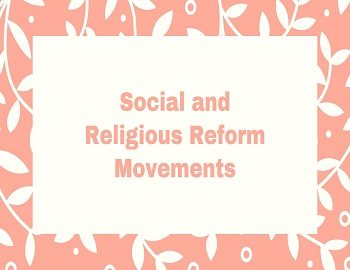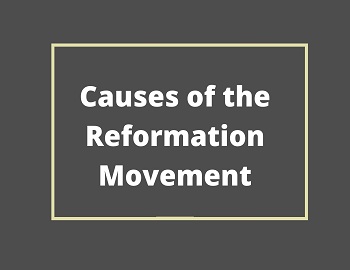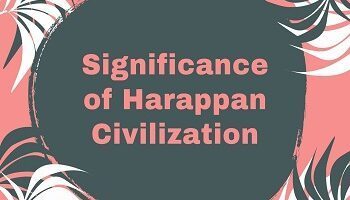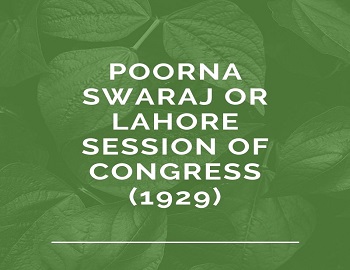Table of Contents
Social and Religious Reform Movements in Bengal and Elsewhere:
Colonialism, basically, implied economic relation but it widely influenced existing socio-cultural structure as well. In fact, the need for efficient economic exploitation of the colony demanded the cultural hegemonisation by metropolitan state. So the colonial state in India started socio-cultural engineering to serve its colonial interest. The colonial interference by the metropolitan state registered two different types of responses from the Indian people that is influence versus reaction. Whereas influence encouraged Indian intellectual to restructure the Indian past and culture with a rational and critical approach, reactions resulted in uncritical adoration of the past. Both sorts of intellectual activities were collectively known as the socio-religious reforms movement in 19th Century India.
If we observe minutely we find that a number of factors made a contribution to the socio-religious reforms movement–
- First of them, was the role of orientalist thinkers. They took a specific interest in exploring the Indian past and culture and gave emphasis on the rich cultural heritage of India. Obviously, such a perception drew the attention of Indian scholars to their own cultural heritage.
- The second factor was the role of Christian missionaries. They supported the spread of western values so that they could work as the harbinger of Christianity in India. In this way, the activities of Christian Missionaries produced two different types of results. On the one hand, it encouraged reforms on the other hand it produced reactions in the Indian mind against the western value system and Christianity.
- Thirdly, English education played a pivotal role in socio-cultural fermentation in the 19th century. Though English educated Indians came in touch with liberal and utilitarian ideas which were persistently making an attack over Indian society and culture. It drew the attention of Indian intellectuals towards the regressive climate in India society. In this way, it created a mental climate for socio-religious reforms.
- Fourthly, even the government-sponsored legislation for social reforms like abolition of sati, widow remarriage act etc. encouraged the Indian reformers to come forward to combat social evils.
- And lastly, the emergence of new social classes gave support to new ideas while overpowering orthodox elements in society.
New ideas demanded a restructuring of the existing socio-religious order. On observation, we underline certain features in the socio-religious reforms movement-
- Rationalism, individualism and religious universalism were their characteristic features. In other words, we can say that it put a question mark on socio-religious taboos. It made individual free from the clutches of the coercive feudal order. Likewise, getting associated with a particular religion it was not confined within a particular sect rather it transcended sectarian boundary.
- Secondly, it was the western elements that worked as a contributory factor in reforms movements but once it started it gave a challenge to the western legacy itself.
- Thirdly, both western and eastern elements made their contribution to the reforms movement but some reforms organizations appeared to be more westernized in their orientation while some others were more backwards-looking.
- And lastly, it was more a social movement than a religious movement. In other words, we can say that the basic concern of reformers was social but as many of the social evils were being supported by religion itself. That’s why religious reforms worked as a prelude to social reforms.
Brahmo Samaj:
Raja Ram Mohan Roy introduced rationalistic principles in social and religious ideas. He founded the Brahmo Sabha on August 20, 1828, & renamed it Brahmo Samaj in 1829. This organisation was the first deliberate attempt in modern India to reform Hinduism and restore it to its pristine glory. The main emphasis of the Raja was on social reform in order to purge the Hindu society of the evils prevailing in it. He attacked the strongest part of the citadel of the Hindu religion and society. He opposed the worship of images of gods and goddesses, denounced Sati, polygamy and abuses of the caste system. He favoured the remarriage of Hindu widows. He laid emphasis on the love of mankind, irrespective of colour, race or creed and upon the service of humanity as the highest rule of life. He repudiated the prohibition of crossing the sea by his voyage to England. By these successive shocks, he tried to reform Hindu society.
Arya Samaj:
Unlike the Brahmo Samaj with its leanings towards Christianity, the Arya Samaj founded in 1875 by Swami Dayananda who is considered by Sri Aurobindo as “one of its great and formative spirits” was a true Hindu Protestant Reformation. The slogan of Swami Dayananda was “Back to the Vedas”. Arya Samaj stood, however, for the fourfold Varna system to be determined by merit and not by birth. It stood for equal rights of man and woman in social and educational matters. The Arya Samaj opposed untouchability, caste discrimination, child marriage and supported widow remarriage and inter-caste marriage. Dayanand Saraswati provided the Arya Samaj with a code of social conduct and moral values. He was perhaps the first Indian to preach the gospel of Swadeshi and “India for the Indians”. The view of de Reincourt is that “there is little doubt today that the great revolt in Bengal in 1905 was largely the indirect result of the Aya Samaj’s religious nationalism and that Dayanand’s organisation was the first real concrete nucleus of political nationalism.









Comments (No)